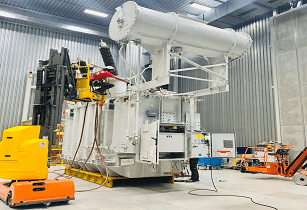With a significant deficit between grid power generation, distribution and consumption, Nigeria is undertaking a bold restructuring initiative to transform the country’s power system
It has now been four years since the Nigerian Government recognised its grid was in serious need of an overhaul owing to a serious imbalance between power generation, evacuation, dispatch and consumption.
With around 15GW of grid power generation capacity installed but only 5GW operational capacity (according to a peak capacity recording in February 2018), the Presidential Power Initiative (PPI) was subsequently established between Nigeria and Germany during a visit by the then German Chancellor Angela Merkel. Together, the two countries agreed to resolve the challenges in the country’s power sector and expand the capacity for future power needs. While this task can be summarised quite simply, it was (and remains) by no means an easy feat.
In a whitepaper composed by Siemens Energy (which was present at the establishment of the PPI and brought on to assess and implement the project) Nigeria’s power systems are constrained by partly idle assets, bottlenecks within the transmission and distribution grid and defective connections within key substations.
It identified the immediate need to redress these issues, upgrade the existing control centre, train personnel to enhance the quality of operations and improve revenue collection through smart metering systems. These would be delivered through three stages:
•Phase One will focus on critical and quick interventions to increase the system’s end-to-end operational capacity from 5GW to 7GW. Interventions include transmission system upgrades, distribution system upgrades, power system studies and training, meta data management systems, and technical training of TCN and Disco employees.
• Phase Two looks to tackle distribution bottlenecks to enable the full use of existing generation and distribution capacities. It will bring the system’s operational capacity to 11GW. Interventions include further transmission system upgrades, further distribution system upgrades, rehabilitation of existing power plants, embedded power generation projects for Discos, and gas processing projects to utilise flare gas for existing and new power generation.
•Phase Three will centre around achieving total operational grid capacity (25GW) in the long term with commensurate upgrades and expansion of the national generation, transmission and distribution systems. Siemens has identified power generation projects with the Nigerian National Petroleum Corporation (NNPC) which include combined cycle power plants; Kaduna (1.35GW); Kano (1.35GW); and Agura (0.45GW).
In the latest issue of African Review, Oladayo Orolu, head of business development and government affairs at Siemens Energy, explored the project and its progress in more detail. Read the full interview here.





